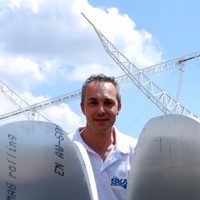Coffee talks
Friday 01/03/2024 @ 11:30, Sala riunioni quarto piano e on-line (meet.google.com/sue-bwvk-axf)
Jader Monari (INAF-IRA), "SKAlow – The INAF contribution"
INAF together with several Italian industries, Universities and other research institutes have been involved in this great project since its conception back in 2002. The first developments occurred in 2004 with the involvement of the Institute of Radio Astronomy in the EC FP6 SKADS project using the large Northern Cross radiotelescope for testing, among others, new technologies to be applied to the new low frequency aperture arrays as the analogue RF optical fibre links and the acquisition and processing systems able to implement the beamforming entirely in the digital domain, both crucial parts of the SKAlow receiving system. In 2009 a national INAF group was created with the participation of colleagues from OAA, OAC, IASF-Mi and external partners from UNIBO, UNIFI, CNR-IEIIT and industries which have given more impetus to Italian technological developments. This cross-national public-private collaboration has allowed INAF to gain a leadership in several technological areas such as the antenna and an original UAV-based test system, the digital acquisition systems and beamforming firmware design. Most of the proposed technologies have been applied to the Aperture Array Verification Program (AAVP-2010) and to the Aperture Array Design Consortium (AADC -2016). After the System SKA Critical Design Review, the baseline design of the entire SKAlow receiving system is practically "Made in Italy". The first Aperture Array Verification System (AAVS1/2/3) prototypes were installed with a great involvement of INAF staff. Furthermore, INAF participated to the first observations, verification and commissioning of these instruments, making a further contribution towards the industrialization phase. Today INAF has a key role for the SKA Low antennas, receivers and signal processing system, and is strongly involved in the construction of the first release of the telescope (AA0.5).

